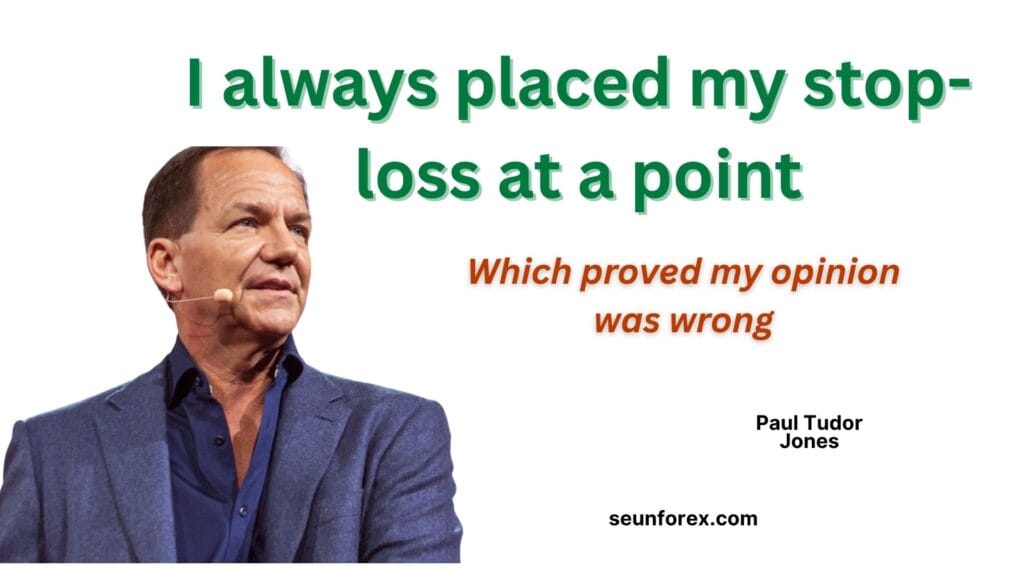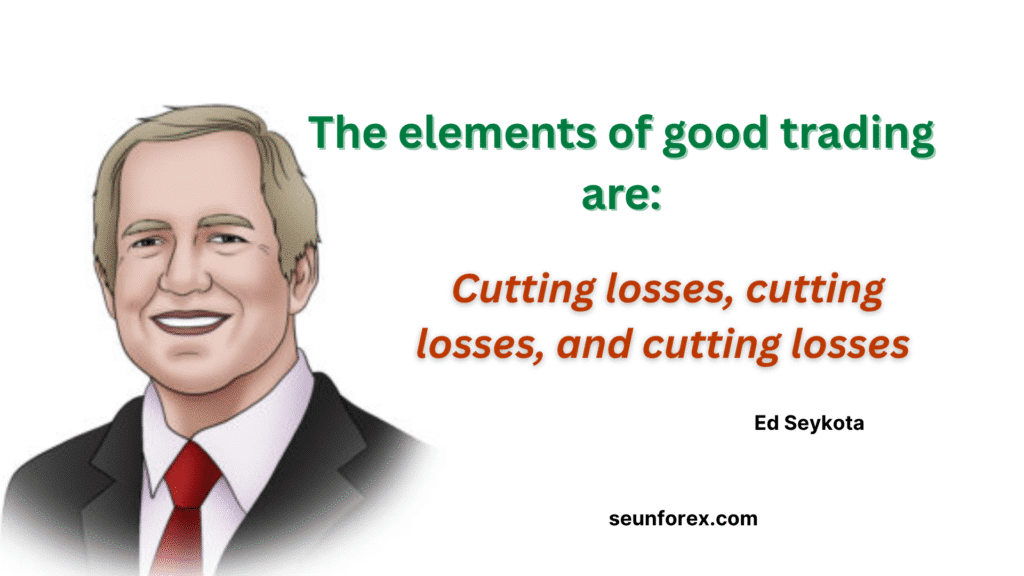
“Trading is not about where you start — it’s about where you stop.”
— Anonymous Market Legend
🎭 The Setup: The Trade That Should Have Worked
Trading Exit Strategy: You’ve seen it before — a perfect setup.
Everything aligns: the trend, the pullback, the confirmation candle. You press buy.
The market moves in your favor — five, ten, twenty pips. Confidence builds. You feel smart.
Then, suddenly… the candle reverses. Your unrealized profit evaporates.
You tell yourself, “It’s just a pullback.”
It’s not.
The market stops you out.
You walk away frustrated, replaying the moment in your mind — “I had it. Why didn’t I exit?”
That question separates those who trade from those who win — and that’s exactly what a real trading exit strategy solves.
💭 The Great Illusion: Entries Get the Glory, Exits Make the Money
Every new trader obsesses over entries.
They hunt for “the best setup,” the “perfect indicator,” the “magic pattern.”
But the truth?
Your entry defines your idea.
Your exit defines your income.
Entries are about hope.
Exits are about judgment.
And judgment — not hope — is what pays.
🧠 Why We Fall in Love with Entries
Trading Exit Strategy begins in the mind long before you close a trade.
The human brain is wired for beginnings.
A new trade feels like a new story — the thrill of potential, the dopamine of a “smart move.”
When you enter a trade, you’re imagining profit.
When you exit, you’re confronting reality.
That’s why most traders freeze.
They don’t want to end the story — they want to be right.
But markets don’t reward your ego.
They reward your execution — and that’s where a clear trading exit strategy makes all the difference.
🧩 The Psychology of Letting Go
There’s an old saying among floor traders:
“Amateurs want to be right. Professionals want to make money.”
This truth hides a paradox: to make money, you have to let go of the need to be right.
An exit isn’t an admission of defeat — it’s a declaration of control.
When you close a trade — win or lose — you’re saying,
“I’m done hoping. I’m managing.”
The great traders are not emotionally detached; they’re emotionally disciplined.
They feel the same fear and greed you do — they’ve just trained themselves to act opposite of those impulses.
⚙️ The Market Doesn’t Reward Waiting — It Rewards Action
Every second you hesitate to exit a trade that’s invalidated is a second you’re paying tuition to the market.
Losses don’t hurt as much as regret.
Regret that you didn’t exit when your plan told you to.
“Cut your losses short and let your profits run.”
— Paul Tudor Jones
Everyone quotes it. Few live by it.
Because in real time, cutting a loss means admitting you’re wrong — and that stings.
Letting a profit run means trusting the market, not your fear — and that’s even harder.
But this is where your edge lives:
in how you handle the end, not the beginning.
🧮 The Exit Is Where the Math Lives
Let’s strip emotion from it.
Trading is math in motion.
A profitable system doesn’t come from high win rates — it comes from positive expectancy.
Expectancy = (Average Win × Win Rate) – (Average Loss × Loss Rate)
That formula is built entirely on exits.
Not entries.
A perfect entry with a poor exit = a bad trade.
A mediocre entry with a great exit = a profitable trade.
That’s why veteran traders say:
“You can enter by accident and still make money — if you exit on purpose.”
🪞 The Entry Bias Trap
Here’s what happens in real life:
- You take a trade.
- It moves slightly against you.
- You rationalize — “It’s still valid.”
- You widen your stop.
- You hold longer.
- You lose big.
Then, the next time:
- You take a trade.
- It moves slightly in your favor.
- You grab quick profit — “Just to be safe.”
- The trade runs 5x further without you.
You just experienced the trader’s paradox:
- Small wins.
- Big losses.
- Emotional exhaustion.
The only fix is exit discipline.
⚖️ The Phantom Rule: Assume You’re Wrong Until Proven Right
Every great trading exit strategy starts with humility.
Phantom of the Pits, the legendary pit trader, once wrote:
“Positions must be reduced and removed unless or until the market proves the position correct.”
That’s not pessimism — it’s power.
By assuming you’re wrong at entry, you instantly shift from hoping to managing.
You stop defending bad trades and start defending your equity.
When the market confirms your idea — then you can size up.
Not before.
That’s the mindset of a risk-first trader, and the foundation of every disciplined trading exit strategy..

🧭 The “Exit-First” Framework
Before you ever click “Buy” or “Sell,” ask:
- Where will I exit if I’m wrong?
- Where will I exit if I’m right?
- What condition proves my idea invalid?
- What condition proves my idea correct?
Then write those answers down.
A trade without an exit plan is just a bet.
A trade with an exit plan is a business decision.
💡 Behavior Over Brilliance
Most traders don’t fail because they can’t analyze charts.
They fail because they can’t execute exits.
The market punishes hesitation more than it punishes ignorance.
Phantom once said a trader should sit in a “slider-rocker chair” —
a chair that rocks in place —
to remind himself that markets often move but go nowhere.
Don’t get hypnotized by motion.
Focus on decision points, not noise.
📊 The Two Traders Story
Let’s imagine two traders, A and B — both with the same entry, same setup, and same stop.
Trader A takes a quick profit at 1R.
Trader B, following a disciplined trading exit strategy, holds for 3R because the market structure remains intact.
Ten trades later:
- Trader A: 6 winners, 4 losers, average +1R
- Trader B: 4 winners, 6 losers — average +3R
Who comes out ahead?
Trader B wins big — even with fewer “correct” calls.
Why?
Because exit quality outperformed entry precision.
This simple example shows why mastering your trading exit strategy matters more than obsessing over perfect entries.
⚙️ Implementation Checklist: Exit Mindset
✅ Assume you’re wrong at entry.
Enter small. Scale only when proven right.
✅ Define both exits before entry.
Have a “stop” and a “goal” before clicking “Buy.”
✅ Let your plan, not your feelings, close trades.
If it hits your condition — execute.
✅ Use time stops.
If a trade goes nowhere for hours or days, it’s consuming opportunity. Exit and reset.
✅ Track exit performance.
Don’t just log wins/losses — log how well you exited.
✅ Avoid post-exit regret.
Once out, stay out. Review later, not emotionally.
🧩 Why Exits Feel “Wrong” (And Why That’s a Good Sign)
Every successful exit will feel uncomfortable:
- Cutting a loser feels premature.
- Letting a winner run feels greedy.
That discomfort is your compass.
If an exit feels too easy — you probably exited emotionally.
If it feels difficult — you probably exited correctly.
The goal is not comfort; it’s control.
💬 Voices from the Masters
“Losers average losers.” — Paul Tudor Jones
“The elements of good trading are: cutting losses, cutting losses, and cutting losses.” — Ed Seykota
“The big money is made in the sitting.” — Jesse Livermore
Notice what they all have in common?
Every quote is about exits — not entries.
🧠 The Exit Mind: How Pros Think Differently
Beginners think: “I’ll enter when it looks good.”
Professionals think: “I’ll exit when it stops being good.”
The first is hope-driven.
The second is logic-driven.
One is about predicting.
The other is about reacting.
Trading mastery isn’t prediction.
It’s precision — in how you end trades.
⚔️ The War Between Ego and Exit
Every trade has two opponents:
- The market.
- Your ego.
The market will test your analysis.
Your ego will test your discipline.
The only way to win both battles is to surrender early —
not to the market, but to the process.
When your system says “exit,” don’t debate.
Act.
That’s how traders evolve from gamblers to professionals.
🎬 The Truth Few Traders Ever Learn
Every beginner thinks trading is about finding the right moment to enter.
They build watchlists, scan for setups, and obsess over indicators.
But professionals know something far more subtle — and infinitely more powerful:
You don’t get paid for entering. You get paid for exiting well.
The market doesn’t reward good ideas.
It rewards good exits.
Your P/L is not a reflection of your system’s accuracy — it’s a mirror of your exit discipline.

⚙️ Why Great Traders Build Systems Backward
Most traders design systems in this order:
- Find setups.
- Choose entries.
- Set stops.
- Hope for profit.
But pros flip it:
- Define the exit strategy first.
- Design entries that justify those exits.
- Let the system flow from management — not excitement.
In other words, they don’t chase setups; they engineer outcomes.
They start from the end — and reverse-build the process.
That’s not just logic. That’s longevity.
🧠 The Exit-First Mindset in Practice
Imagine this: before you take a single trade, you already know —
- How much you’re willing to lose.
- When you’ll scale out.
- When you’ll stop adding.
- What time you’ll close the chart if nothing happens.
You’ve removed uncertainty before it begins.
Now you’re not reacting to price — you’re executing a script.
That’s what pros do.
They act from plan, not emotion.
And that plan is built entirely on exits.
📏 The Three Exit Models
Let’s break down how different types of traders approach exits.
1️⃣ The Mechanical Exit
This model uses fixed rules — no emotion, no guessing.
Examples:
- Exit when price hits 2R target.
- Exit at trailing stop (ATR-based).
- Exit after X bars if unprofitable.
✅ Pros: consistency, no hesitation.
❌ Cons: rigidity, can miss large trends.
2️⃣ The Discretionary Exit
This model depends on reading price structure, context, and intuition.
Examples:
- Exit when structure breaks.
- Exit when volatility shifts.
- Exit when momentum diverges.
✅ Pros: flexible, adapts to real-time context.
❌ Cons: easy to rationalize emotional decisions.
3️⃣ The Hybrid Exit
The best of both worlds — structured logic with human oversight.
Example hybrid:
- Base exit = 2R target.
- Trailing condition = 50 EMA.
- Override rule = if price structure confirms continuation, hold partials.
✅ Pros: adaptable, balanced, realistic.
❌ Cons: requires strong self-discipline and journaling.
📈 The Exit Ladder Strategy
Professional traders don’t exit in one move.
They ladder out — scaling in and scaling out with logic.
Think of it as a staircase built on confirmation.
Example:
- Enter 1 position → ⅓ off at 1R.
- Move stop to breakeven.
- ⅓ off at 2R.
- Let final ⅓ run with trailing stop.
This method creates emotional relief (profit locked), structural safety (risk removed), and potential asymmetry (runner remains).
“Never all in, never all out — scale with the market, not against it.”
This ladder not only maximizes reward, it minimizes regret — the twin destroyers of trading psychology.
🧩 Case Study: Same Entry, Different Exit
Two traders, same chart, same idea.
Both buy EUR/USD on a support bounce.
Both risk 1%.
- Trader A exits at fixed 1.5R.
- Trader B scales: half off at 1R, rest at trailing structure.
The result after 20 trades:
| Trader | Win Rate | Avg Win | Avg Loss | Expectancy | Net Return |
|---|---|---|---|---|---|
| A | 60% | +1.5R | -1R | +0.4R | +8R |
| B | 45% | +3.2R | -1R | +0.94R | +18.8R |
Trader B loses more often — but earns twice as much.
Why? Because exits multiply edge.
Entries just expose it.
🧮 The Math of Mastery
Every successful trader eventually internalizes one truth about trading exit strategy:
“It’s not about how often you’re right. It’s about how much you make when you’re right — and how little you lose when you’re wrong.”
That entire equation hinges on exits. Your trade exit discipline determines your average win versus average loss — in other words, your trading expectancy.
The moment you improve exit efficiency — whether through proper stop loss psychology or well-planned scaling — your system’s profitability compounds, even if your entries remain identical.
This is the hidden math behind consistent profits: mastering your trading exit strategy multiplies edge while keeping risk under control.

🧠 The Exit Biases That Sabotage Traders
Even with a perfect system, psychology can still destroy your exits.
Here are the top biases that ruin execution:
⚠️ 1. Loss Aversion
You hold losers hoping they’ll turn — because pain of loss > joy of gain.
Fix: Use mechanical stops. Automate exits so your emotions don’t get a vote.
⚠️ 2. Greed Bias
You refuse to exit winners, thinking they’ll “go further.”
Then they reverse.
Fix: Scale out in steps. Leave a runner — but pay yourself first.
⚠️ 3. Confirmation Bias
You exit too soon on doubt but hold too long on conviction.
Fix: Log every exit reason. Review patterns of self-sabotage.
⚠️ 4. FOMO Bias
You re-enter right after an exit, chasing the same move.
Fix: Enforce a “cooldown rule.” After every exit, wait for next valid setup.
⚠️ 5. Anchoring Bias
You fixate on the entry price as “fair value,” ignoring new data.
Fix: Reframe every candle — treat each new bar as a new market.
🪜 Phantom’s Two Rules — Revisited for Exit Design
Let’s tie everything back to Phantom of the Pits.
Rule #1: Assume You’re Wrong Until Proven Right
Your exit plan starts here.
Until the market proves your idea, your job is defense — not conviction.
Application:
- Reduce size if confirmation fails.
- Exit quickly when structure invalidates.
Rule #2: Press When Right — Never When Wrong
When your trade proves correct, add, but only after confirmation.
Application:
- Build size incrementally (e.g. 6-4-2).
- Protect profits with trailing structure.
- Never double down on losing positions.
Together, these rules turn chaos into choreography.
You stop reacting and start performing.
“The market rewards the trader who behaves least like the crowd.”
And no behavior is rarer than disciplined exits.
⚙️ Implementation Checklist: Exit Engineering
✅ Build your system backward.
Start from exits, not entries.
✅ Use at least two exits.
One for taking profit, one for preserving profit.
✅ Automate what you can.
Emotionless exits outperform emotional ones.
✅ Log every exit reason.
Treat your exit notes as trading gold.
✅ Rehearse exit drills.
Simulate exits more than entries — train reactions under pressure.
✅ Always scale logically.
Add when proven right. Exit when proven wrong.
✅ Protect mental capital.
Every bad exit costs confidence — not just cash.
🧩 The Power of Planned Endings in Trading Exit Strategy
A well-defined trading exit strategy transforms chaos into calm. It clearly defines trade exit discipline, showing you when to act, why to act, and what signals to ignore.
When your system closes a trade automatically, you’re liberated from emotional decisions. You don’t need to “feel” the market — your stop loss psychology and pre-planned exits handle it for you.
This is how professional traders build consistency: not by predicting market moves, but by mastering themselves through disciplined trading exit strategy and precise execution.
🪞 Final Thought: Mastering Your Trading Exit Strategy
If you take one lesson from this series, let it be this:
True trading mastery doesn’t come from knowing where to start — it comes from a disciplined trading exit strategy and knowing where to stop.
The market is a mirror.
If you keep staring at entries, you’ll only see potential.
But when you apply trade exit discipline, you’ll convert setups into actual profit.
Focus on exits over entries.
In trading, endings pay better than beginnings — and your stop loss psychology and risk-reward ratio are the tools that make it happen.
📌 Want to see concrete examples of exit strategies that actually work? Check this guide on simple and effective exit strategies from Investopedia — it breaks down the methods pros use to lock in profits.
📌 Looking to improve your trading decisions further? Keep a structured record of your trades with this Trading Journal Method for Mastering Mistakes — it shows how reviewing exits and entries can systematically boost your results.
🎯 Key Takeaways
- Design trades backward — from exit to entry.
- Engineer systems that manage emotions automatically.
- Build ladders, not cliffs — scale in and out logically.
- Track exit behavior, not just entry setups.
- Master exits, and profits will follow naturally.